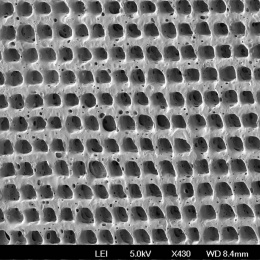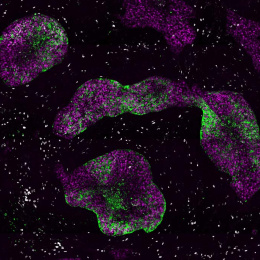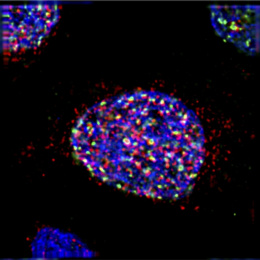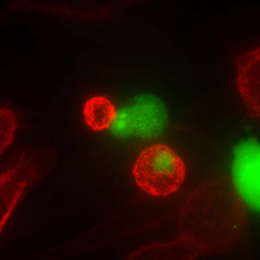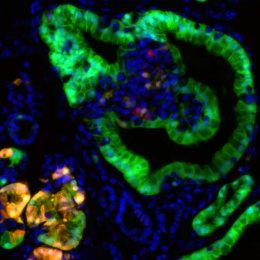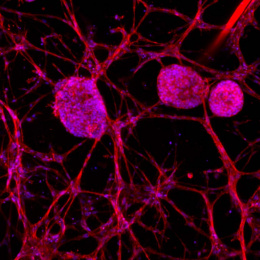The Bad Seed: Modeling the Growth of a Tumor
The Bad Seed: Modeling the Growth of a Tumor
Collections: Image Award Winners, Cancer Discovery Science
2014 Award Winner
Mandar Deepak Muzumdar
Jacks Laboratory
Koch Institute at MIT, MIT Department of Biology
Small changes have big effects. Although scientists know that certain gene mutations trigger tumor formation, the subsequent cellular events that drive cancer progression are not well understood. Cell-specific fluorescent marking allows researchers to track mutated cells over the entire course of cancer development.
This image shows mutated (green) and non-mutated (red and yellow) cells in a pancreas. Over time, the green cells will multiply dramatically and form a solid tumor, while the others will not. Comparing properties and behaviors of the different cell types will set the stage for earlier diagnosis, better treatment, and even chemoprevention of deadly cancers.
Read more about this work in Nature Communications here (published 9/2/16).
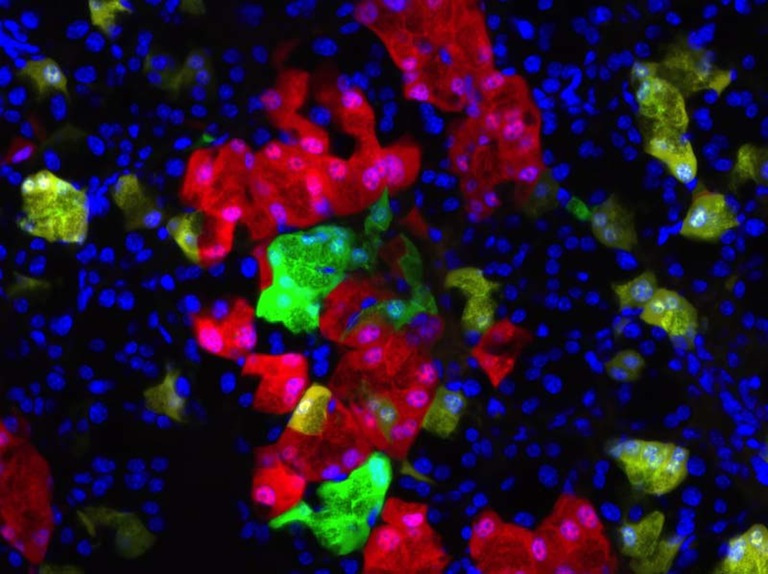
Video
Mandar Muzumdar offers further insight into the story behind his award-winnng image.
You can also watch his presentation from the exhibition opening event here.
